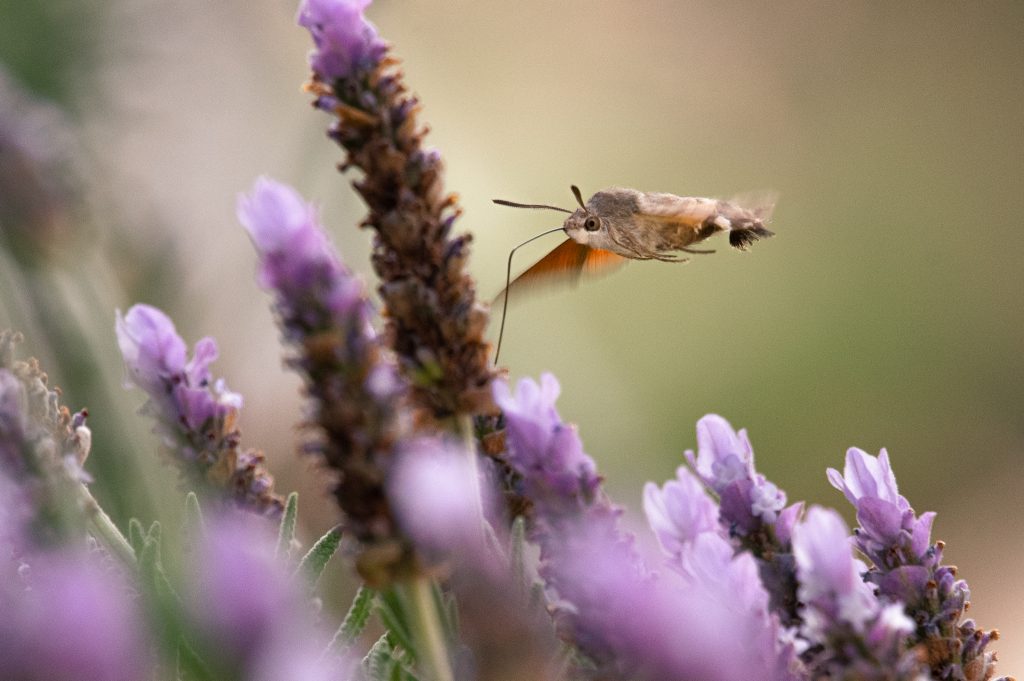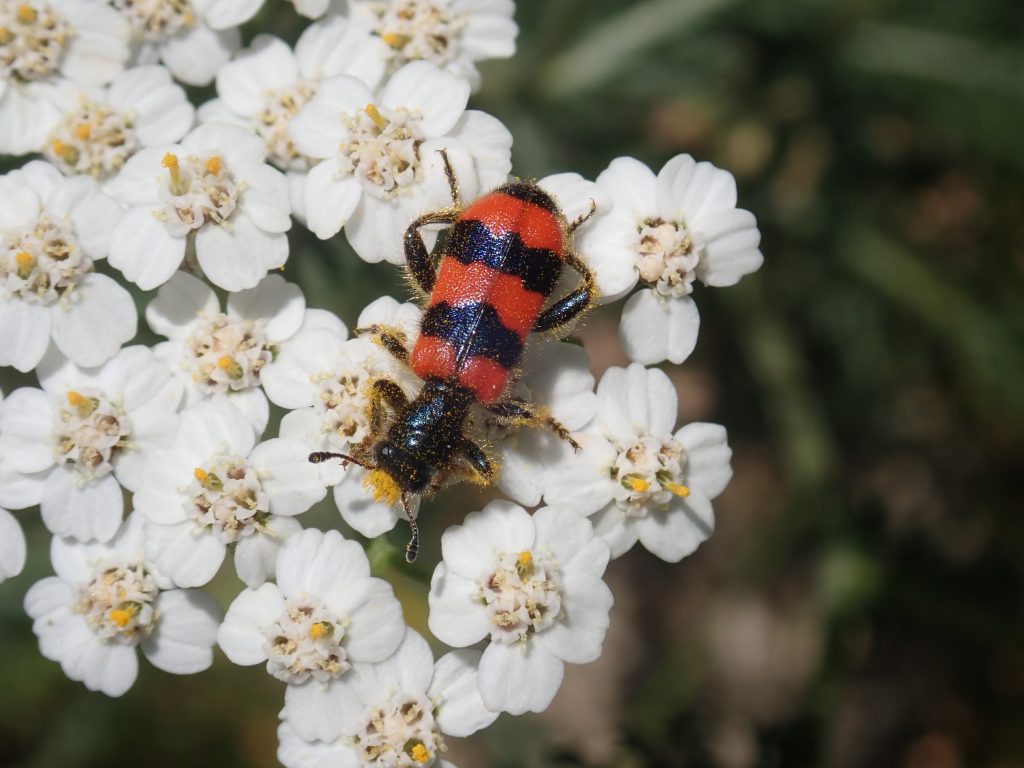Fossil record identifies effect of flowers on insect evolution
A new study published by IBB researcher David Peris in collaboration with researcher Fabien Condamine of the Institute of Evolutionary Sciences in Montpellier (France) has now shown, thanks to the analysis of thousands of data from the fossil record, that flowering plants were decisive for the diversification of insects and that they explain, at least in part, their current richness.

Flowering plants and insects are thought to have developed a close and interdependent relationship over time, which has evolved to optimise reproduction and survival for both parties. Researchers have set out to demonstrate this symbiotic interaction, and that interactions with flowering plants played a key role in the diversification of insects, especially of those that are pollinators. Although this idea has been at the centre of many discussions, no direct evidence was available until now.
The evolutionary success of insects.
Insects are currently the most diverse group of living beings, with an unequalled evolutionary success, which is why we find insects everywhere on the planet. There are several reasons for this, such as the adaptation to all kinds of habitats and resources, or the presence of a hard exoskeleton to protect them.
“While vertebrate species represent only 1% of the number of described species in the world, insects account for almost 60% of the total number of described species” describes David Peris, first author of the published paper.
Parallel paths with flowers.
The flowering plants, the angiosperms, despite being a young group from an evolutionary point of view having appeared just over 130 million years ago, represent the vast majority of plant species on the planet: 90% of the diversity of land plants. How flowering plants have managed to develop to this proportion is a question that Charles Darwin referred to as an “abominable mystery”. Surely co-evolution between insects and angiosperms influenced the evolutionary success of both groups.
Coevolution occurs when two or more species influence each other’s evolution, i.e. evolve together. The variety of mutually compatible forms and specialisations described in plants and their pollinators have been interpreted as examples of co-evolution. For example, the nectar of orchids that is protected in places in the flower where only a particular type of pollinator with very long mouthparts can reach, or examples of plants that open their flowers at night to be pollinated by nocturnal insects. However, demonstrating this co-evolutionary influence is not easy for researchers.

A double effect.
The study, published this week in the journal Nature Communications, has used the set of more than 40,000 insect records described in the fossil record to estimate how different groups have evolved throughout their evolutionary history. The most important results have been the discovery that the evolution of angiosperms had a double effect on the evolution of insects. The evolution of a group is the final result of the sum of the extinctions of its species and the creation of new ones. Insects have achieved great diversity thanks to the fact that at the time of the appearance of flowering plants, these acted by first preventing the extinction of the groups of insects already living on Earth. But they did not only have this effect, as for later, when angiosperms were already a major group of the terrestrial flora, they also promoted the origin of many other new groups of insects.
“This is the first time that scientific evidence of the involvement of these two large groups throughout their evolutionary history has been obtained”, says researcher David Peris. Moreover, the effect is also demonstrated even if only pollinating insect groups are analysed, and also if the most diverse groups of insects are analysed (beetles, flies, wasps, bees and butterflies).

This shows that, “although we already knew that insects pollinated other groups of plants before the appearance of angiosperms, their appearance allowed the groups of pollinating insects to adapt to this new resource, making a leap, and not end up becoming extinct at first” says the principal investigator of the study. “And with this new relationship, new lineages of pollinating insects, such as bees or butterflies, also evolved later on”, he adds.
Despite the influence of the evolution of this group of plants on the evolution of insects, the study also reveals that other factors such as global temperature, the increase in insect diversity itself and the evolution of other plant groups also show signs of correlation with insects. This result suggests that not everything can be explained by the parallel evolution of the two groups alone, but that other factors have also influenced the diversification of insects.
“We now have different hypotheses in front of us to test the effect of each of these factors in future research, and this will bring us closer to understanding, at least in part, how and why insects have achieved the evolutionary success they show”, concludes David Peris.
Reference article:
Peris, D., Condamine, F.L. The angiosperm radiation played a dual role in the diversification of insects and insect pollinators. Nat Commun 15, 552 (2024). https://doi.org/10.1038/s41467-024-44784-4














